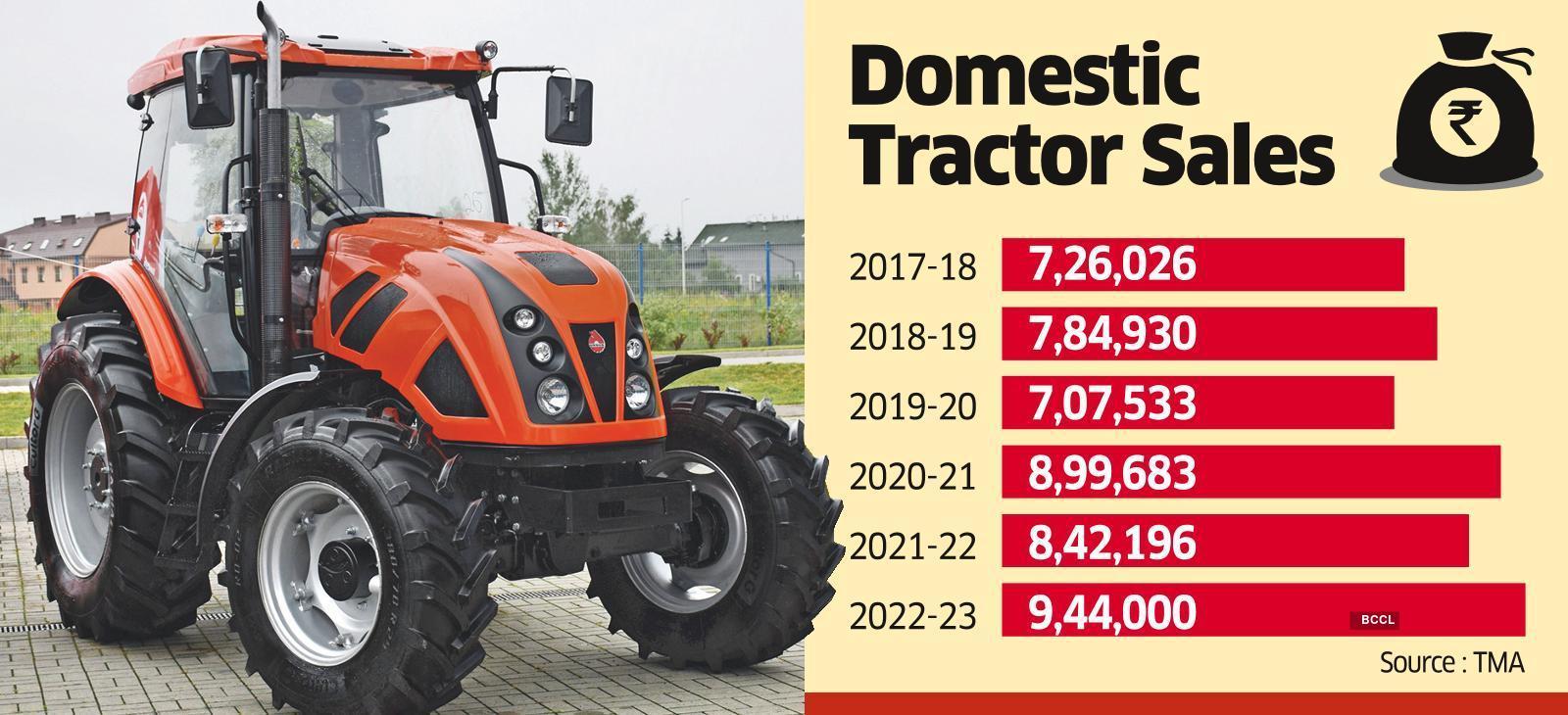Including exports, tractor sales zipped past the one million mark in the year ended March 31, buoyed by an increase in the minimum support prices (MSP) that boosted farm income, coupled with another year of above-normal monsoon, said Hemant Sikka, president – farm equipment sector, at Mahindra & Mahindra.
“With a decent farm income, easy availability of financing has seen more farmers buy tractors as for them the tractor is like another earning member of the family,” Sikka said.
Since September last year, even before the festival season began, domestic tractor sales witnessed a sharp 23% growth year on year, industry executives said.

Tractor companies such as Mahindra, Tafe, Sonalika, and John Deere have introduced a number of models across horse powers, resulting in a better uptake.
Tractors are also used for haulage in rural India, a business that fetches additional income to tractor-owning farmers, said Sikka who is also president of Tractor and Mechanisation Association (TMA).
Also, farm labour is becoming scarce, making tractors even more valuable to farmers, he added.
Government schemes aimed at specific states have also given a thrust to farming, thereby aiding tractor sales, experts said.
However, even as the fundamentals that drive tractor sales are expected to remain strong, there are downside risks, industry insiders said.
“The first quarter of FY24, this momentum will continue. Post July, the pace of growth may taper down,” said Bharatendu Kapoor, president – sales & marketing, at TAFE.
Unusually high temperatures followed by unseasonal rainfall in parts of northern and central India have raised concerns of a weaker rabi harvest this year and may weigh on tractor sales, Crisil Ratings said in a recent note.
“Domestic tractor sales volume growth is seen halving to 4-6% in fiscal 2024 from a high base – created by a compound average growth rate of 10% since fiscal 2020 on the back of successive normal monsoons,” the rating agency said.
Weather agencies have also flagged probability of an El Nino event during July-September this year, which could lead to below-normal rainfall. While above-average reservoir levels would provide some respite, uncertainties could persist.
The El Nino effect had led to a shortfall in monsoon during FY15 and FY16, impacting farm incomes and leading to tractor volume declines of 13% and 10%, respectively, Crisil pointed out.
Shailendra Jagtap, managing director of John Deere, said even as the growth may moderate to single digit in the current year, tractor demand is likely to remain robust.
“The unseasonal rains and hailstorms climate change may impact the farm output adversely, but a strong rural economy and finance availability will help maintain the momentum,” he said.











